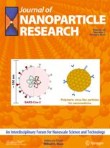
Abstract
Advancing the understanding of stability behavior and aggregation mechanisms of quantum dot (QD) nanoparticles in natural systems is fundamental to elucidate their fate and transport, bioavailability, environmental toxicity, and subsequent risks to environmental and public health. This study investigates the aggregation kinetics and colloidal stability of QDs as a function of pH and organic ligands—acetate, oxalate, and citrate. Results indicated an influence of solution chemistry upon both the aggregation kinetics and colloidal stability of QDs. The zeta potential of QDs, with a point of zero charge (pHPZC) between pH 1.5 and 3.5, decreased (from positive to negative) with increasing solution pH. The diameter of QD aggregates was ~500 nm in the region of pHPZC and decreased with pH when pH > pHPZC to 40–50 nm. Organic ligands enhanced the negative zeta potentials of QDs at pH = 1.5 and pH = 3.5. The impact of ligands on the levels and rates of aggregation was pH dependent; furthermore, the presence of ligands increased the diameters of all QD nanoaggregates at pH 3.5 (e.g., 817 nm for 0.001 M citrate). QDs and organic ligand-QD nanoparticle complexes remained stable across pH values 5–9. In terms of environmental and toxicological risk assessments, results revealed that QDs and organic ligand-QD nanoparticle complexes remain stable across a significant range of pH values (5–9), indicating that this stability behavior could enhance the mobility, transport, and residence time of QDs in terrestrial and aqueous environments, and facilitate the bioavailability of QDs, therefore augmenting the adverse effects of QDs in the environment.



Δεν υπάρχουν σχόλια:
Δημοσίευση σχολίου
Σημείωση: Μόνο ένα μέλος αυτού του ιστολογίου μπορεί να αναρτήσει σχόλιο.